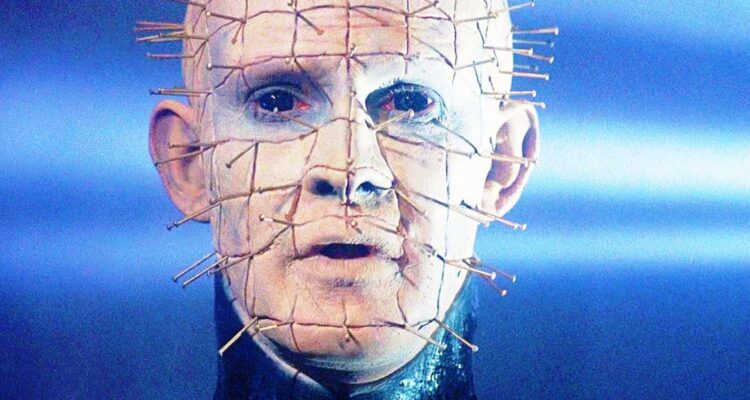Clive Barker’s Hellraiser got a divided reception on its release 35 years ago. To some it was a masterpiece. To others, it fell sorely short of any praise.
Regardless of its varying impact on audiences, Barker’s directorial debut and cosmic horror film gave viewers a lot to talk about.
The plot involves a mysterious puzzle box which when tampered with, summons a group of extra dimensional beings called Cenobites, who cannot differentiate between pain and pleasure.
The unique visuals, strange storyline, and sheer audacity to broach the taboo topic of S&M and gay sexuality in 1987 are what led the film to stand out in the public eye.
The visuals in Hellraiser are quite possibly the most compelling part of the film, as Frank’s gruesome revived form and the eerie Cenobites diverted from anything commonly seen in media at the time.
From his return from the dead to the conclusion of the film, Frank’s form changes as Julia feeds him more victims. With each stage, Frank inches closer to regaining a human-like form, and it works wonders visually. The fleshy blood-red humanoid resembles a human being, but it is the denial of a completed form that sears this visual into the audience’s memory. He’s almost human, but not quite, and that in itself is terrifying.
The Cenobites are startling, grotesque beings with cold, calculating faces and deformities that induce fear instantly. Pinhead, leader of the Cenobites, stands out among them all, his ghostly face riddled with needles, a frightening contrast to the rest of the Cenobites. Pinhead remains a striking character, alone in his unconventional appearance and chilling design.
The storyline of Hellraiser is an unusual one. We follow two subplots that converge at the end, the first being Julia and Frank’s relationship and her agreement to lure men home for him to consume, and the second being Kirsty’s encounter and escape from the Cenobites.
The rules for the universe we are venturing into are unclear in the first film, which complicates the Kirsty subplot the most. Not much about the mysterious puzzle box and how exactly it works is explained. However, the movie does pose an intriguing question to the audience: can we ourselves distinguish pain and pleasure? Very often, the two are confused, which creates a terrifying link between the Cenobites and viewers, Barker’s attempt to cause viewers to reflect.
Hellraiser wastes no time in diving into sexuality, with an intense scene that contrasts Frank and Julia having intercourse with Julia’s husband Larry deeply cutting his hand on a nail. The shifts from the sex scene to the injury in fast and mounting tension create the perfect juxtaposition of pleasure and pain. Julia’s sexuality is explored throughout the film, as she remembers the forbidden relationship she enjoyed with her husband’s brother, Frank. Hellraiser allows Julia to give in to her urges and sexual desire, something usually denied to women and avoided in films of the time. The audience sees Julia’s morals deteriorate as her sexual inclinations drive her to do the unspeakable.
Barker’s Hellraiser is undeniably unique in many ways, its flaws and shortcomings seemingly compensated for by impressive visual effects for the time period and nostalgia.

